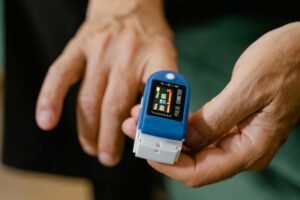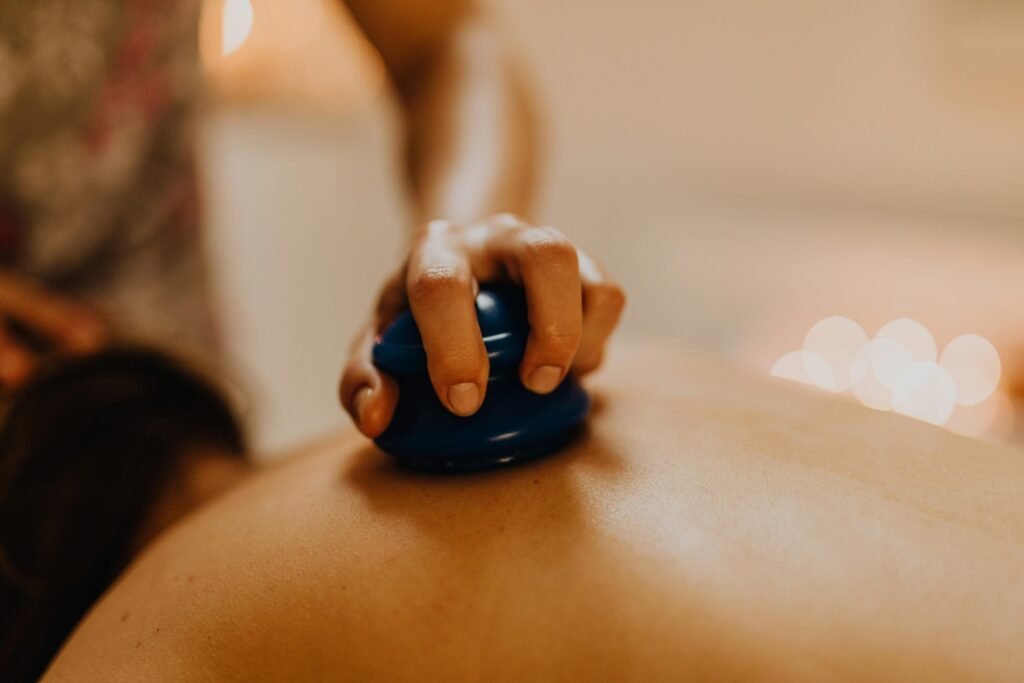Can Acupressure Help with POTS? As patients search for complementary strategies beyond pharmaceutical interventions, acupressure—a technique rooted in Traditional Chinese Medicine (TCM)—is gaining attention as a gentle, non-invasive way to regulate nervous system imbalances. This post explores how acupressure may support symptom relief for those living with POTS.
What Is Acupressure and How Does It Work?
Acupressure involves applying firm, targeted pressure to specific points on the body—called acupoints—that correspond to organ systems and pathways known as meridians. Unlike acupuncture, which uses needles, acupressure relies on fingers, palms, or tools to stimulate these areas.
This stimulation may help:
How do you best manage a "POTS bad day"?
- Improve blood circulation
- Soothe overactive stress responses
- Support digestion and energy levels
- Rebalance autonomic nervous system function
In Western terms, acupressure may influence nerve signaling, hormone regulation, and muscle tension. Many POTS symptoms are linked to dysregulated autonomic pathways—making this modality worth exploring.
Understanding POTS Through a Holistic Lens
POTS is categorized under dysautonomia, meaning the autonomic nervous system fails to regulate key involuntary functions like heart rate, blood pressure, digestion, and temperature control. Triggers vary widely and may include:
- Viral illness
- Autoimmune response
- Genetic predisposition
- Surgery or trauma
The condition disrupts “homeostasis” and may cause a chronic cascade of discomfort. While medications like beta blockers or fludrocortisone are commonly prescribed, many patients look toward lifestyle modifications and natural approaches for additional relief.
Acupressure for POTS: Promising Techniques and Points
Though not a substitute for medical care, acupressure may help relieve several hallmark symptoms of POTS when applied thoughtfully and regularly. Let’s break down a few key symptom categories and the points associated with them:
Dizziness and Lightheadedness
- Point: PC6 (Inner Gate) — Located on the inner forearm, this point is associated with stabilizing heart rate and easing vertigo.
- Point: GV20 (Hundred Meetings) — Found at the crown of the head, this helps increase blood flow to the brain.
Rapid Heartbeat
- Point: HT7 (Spirit Gate) — Near the wrist, this point is known to calm the heart and reduce palpitations.
- Point: CV17 (Sea of Tranquility) — Situated on the sternum, helpful for chest tension and breath regulation.
Fatigue and Brain Fog
- Point: ST36 (Leg Three Miles) — Located below the knee, this powerful point can boost energy and immune function.
- Point: LI4 (Joining Valley) — On the hand, useful for circulation and clearing mental stagnation.
Nausea and GI Upset
- Point: CV12 (Middle Cavity) — Located mid-abdomen, ideal for soothing digestive distress.
- Point: SP6 (Three Yin Intersection) — Inside lower leg, supports gut motility and hormonal balance.
Each session can be self-administered or guided by a practitioner, and pressure should be firm but not painful, held for about 1–2 minutes per point.
Benefits of Acupressure for POTS Patients
While individual results vary, many report gentle yet meaningful shifts in how they feel after incorporating acupressure. Potential benefits include:
- Reduction in dizziness and brain fog
- Decreased anxiety and overstimulation
- Stabilization of energy levels
- Fewer GI flares and better sleep quality
Acupressure is also accessible—it doesn’t require appointments or expensive equipment, and it’s safe to practice at home, alone or with support.
How to Get Started Safely
Beginning acupressure requires little more than knowledge and consistency. Here’s how to ease into it:
- Start with 3–5 points that target your most disruptive symptoms
- Use gentle pressure and calm breathing to support nervous system regulation
- Avoid overstimulation—less is often more
- Keep a journal to track symptom changes and effectiveness over time
Integrating acupressure into morning or evening routines can help reinforce balance and reduce stress buildup throughout the day.

GnarlyTree | MEDICAL EQUIPMENT
Essential Medical Equipment for POTS | Tools for Symptom Management
Why Medical Equipment is Vital for POTS Management Managing POTS requires a combination of lifestyle adjustments, medical support, and specialized Medical Equipment for POTS to ease symptoms and improve daily...
Frequently Asked Questions
Can acupressure cure POTS?
No, but it may reduce the severity of symptoms when used as part of a holistic care plan.
Is acupressure safe to practice daily?
Yes, as long as pressure is gentle and technique is mindful, it can be safely done daily.
What’s the difference between acupressure and acupuncture?
Acupressure uses touch, while acupuncture uses needles—both aim to regulate energy flow and balance systems.
Which symptoms of POTS respond best to acupressure?
Fatigue, dizziness, anxiety, and digestive complaints often show the most improvement.
Can acupressure help with brain fog?
Yes, points like ST36 and LI4 may support improved mental clarity and circulation.
Do I need a professional to perform acupressure?
No, many techniques can be learned and practiced independently, though guidance can improve outcomes.
Should I stop medication if trying acupressure?
No, acupressure is complementary and should not replace prescribed treatments.
Can acupressure trigger worsening of symptoms?
Overuse may cause temporary overstimulation; adjusting technique or timing often resolves this.
Final Thoughts
For individuals navigating the daily instability of POTS, acupressure offers a gentle, hands-on method of restoring calm, promoting circulation, and addressing discomfort in real time. Its accessibility and low risk make it an ideal adjunct to more traditional therapies. With thoughtful application and patient observation, acupressure may serve as a quiet but powerful ally in the pursuit of balance. Whether used alone or alongside other holistic tools, its role in supporting autonomic regulation deserves more exploration and visibility.



